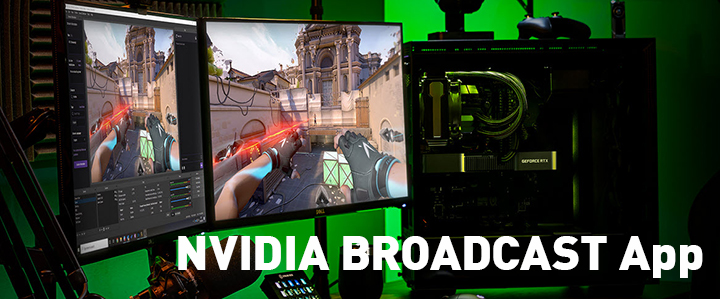


Honestly, I didn't think it looked bad, for the most part. I just watched a few minutes of your video, Jarred. I'm personally looking forward to the time when we can all have virtual cartoon avatars like Toy Jensen talking in place of real people, perhaps reading articles that were written by AI, with the videos and articles both being consumed by AI. Long-term, I suspect at some point Nvidia will end up with some AI models that are more complex and require faster hardware than an RTX 2060 - just like how DLSS 3's Frame Generation feature requires an RTX 40-series graphics card - but for now any RTX GPU made in the past four years can power this feature.ĭo you like the effect, hate it, find it creepy, or something else? Let us know in the comments, along with other effects you'd rather see. I tested it with an RTX 3090 Ti, but Nvidia lists the RTX 2060 as the entry point (and this should include mobile RTX 3050 GPUs, as far as I know). Regardless, Nvidia Broadcast with Eye Contact is now available for RTX owners to test. Solving human error through AI might just end up encouraging bad habits - what happens if you end up on a video feed that doesn't correct eye contact? If you want to look like you're looking at the camera, you should probably learn to look. What's more difficult to say is whether this sort of effect is even beneficial in the first place. I guess this could be intentional, because having someone staring directly into the camera throughout an entire video chat would be a little creepy - but if it is, some adjustments to timing need to be made. The next time you fire up a game or a communications app, such as Microsoft Teams or Slack, you can take advantage of the benefits of the noise suppression tool, so long as you select the "AMD Streaming Device" option as your input and/or output device.One of the things I noticed in testing is that often the live video feed would oscillate between me looking at the camera and me looking elsewhere, even though my focus stayed in the same spot. You can also choose to switch it on for either your input or your output device or for both of them at the same time. Under Audio Settings in the Audio & Video tab, you'll see a toggle to enable the feature.
#How to use nvidia broadcast upgrade
If you know your computer has the components needed to access the feature, make sure to upgrade to the latest version of AMD Software before heading to the Settings page.
#How to use nvidia broadcast series
That said, Noise Suppression is only available for computers with Ryzen 5000 series and newer processors, as well as for systems with Radeon RX 6000 series and newer graphics cards. It can help you stay focused if you're in a meeting or attending online classes, for instance, because it can block the sounds of somebody's barking dog or crying baby in the background. The feature works for both input and output devices, which means it can not only suppress noise captured on your mic, but also noise coming from someone else's. AMD's Noise Suppression tool can reduce background chatter and sounds in real time through the use of a deep learning algorithm. Now, AMD has launched a similar tool for computers powered by its chips, and it could vastly improve your gaming and live streaming experience or lead to cleaner recordings. In a piece examining what the NVIDIA Broadcast can do, we praised its noise removal capability for being "impressively adept" at stripping away everything but your voice.


 0 kommentar(er)
0 kommentar(er)
